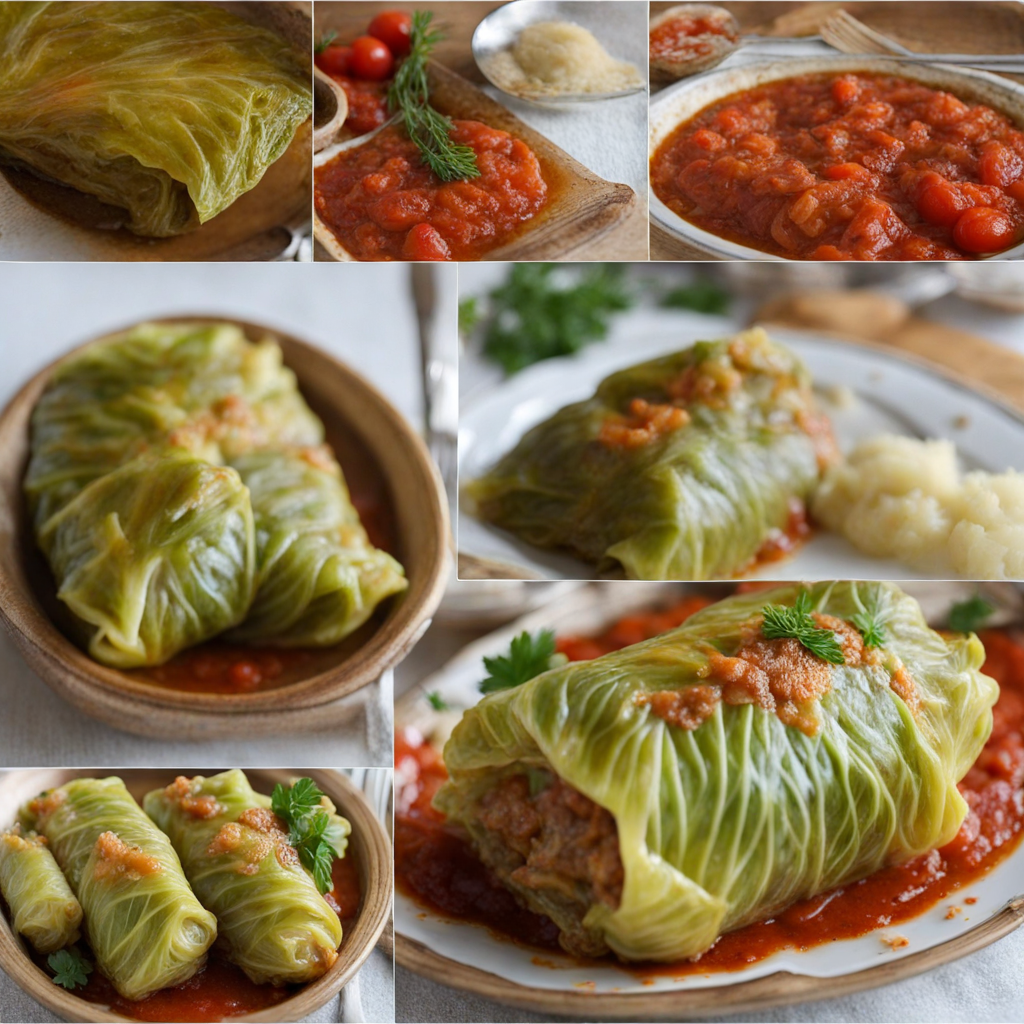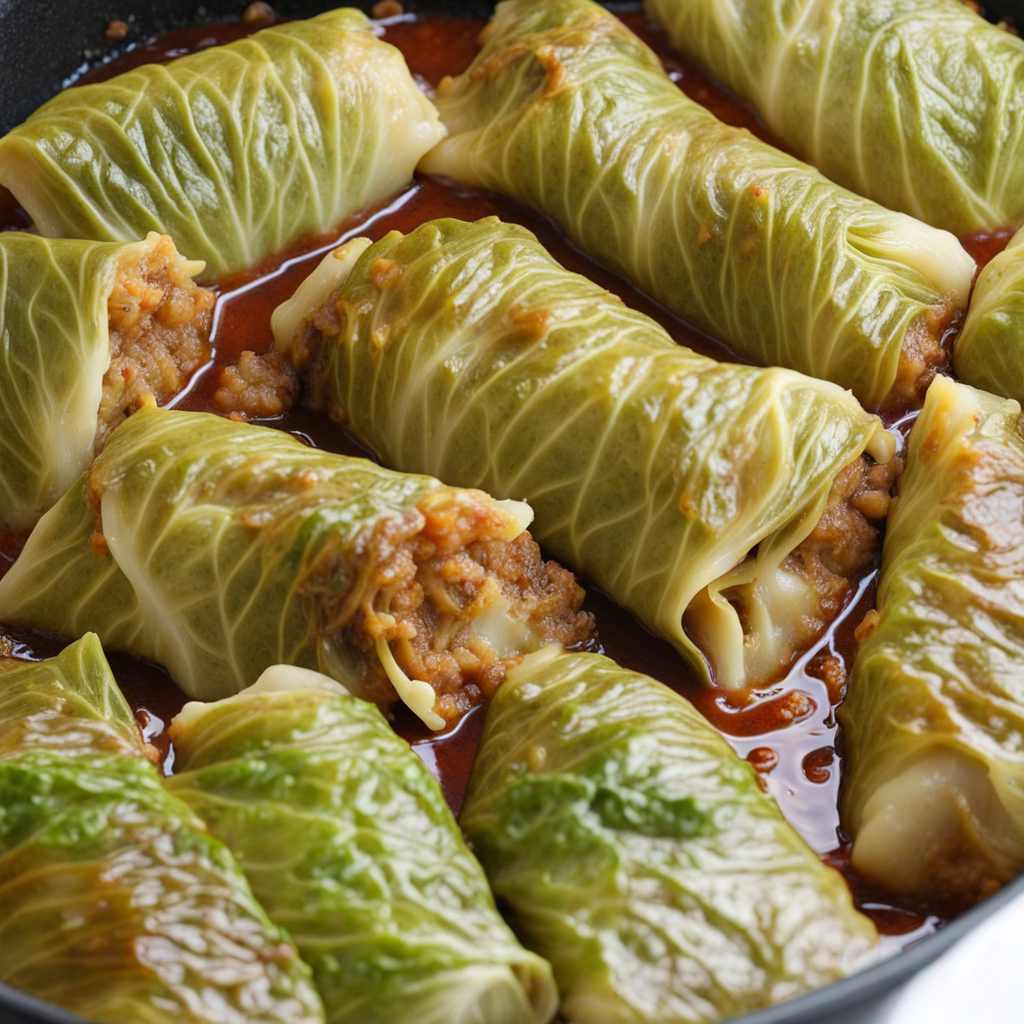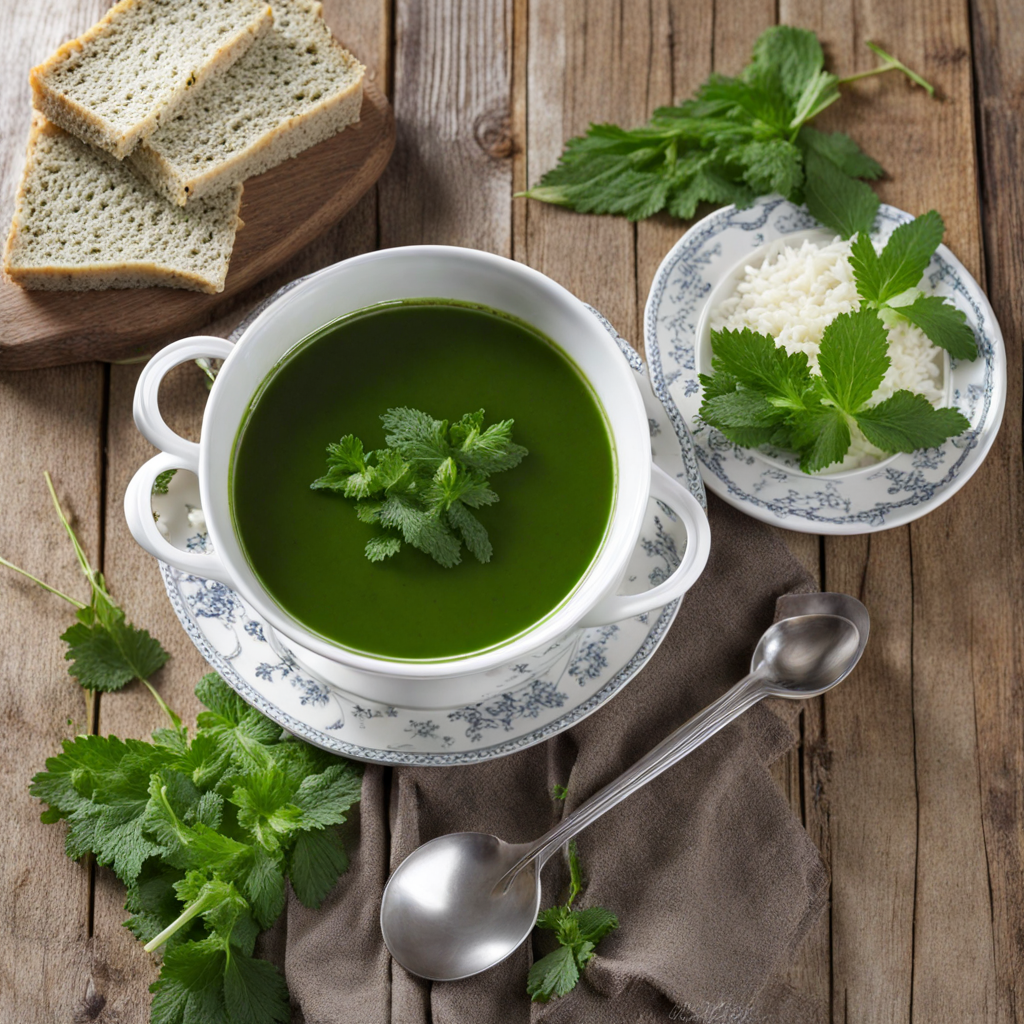Stuffed Cabbage Leaves
Stuffed cabbage leaves, known as "sarmi" in Bulgaria, are a beloved traditional dish that showcases the country's rich culinary heritage. The dish typically consists of tender cabbage leaves that are carefully blanched to soften them, making them pliable for the stuffing. The filling is often a delightful mixture of ground meat—usually pork or beef—combined with rice, finely chopped onions, and a medley of herbs and spices, such as dill and paprika, which infuse the dish with a fragrant aroma and vibrant flavor. Each roll is meticulously crafted, with the cabbage leaf enveloping the savory filling, creating a bite-sized package of goodness. As the stuffed rolls are simmered in a pot, they soak up the rich flavors of the broth, which may include tomato sauce, smoked meats, or even a splash of vinegar for a hint of tanginess. This slow-cooking process allows the ingredients to meld together beautifully, resulting in a comforting dish that warms both the heart and the soul. The cabbage leaves themselves become succulent and tender, while the stuffing remains juicy and flavorful, creating a satisfying contrast of textures in every bite. Sarmi is often served with a dollop of thick yogurt or a sprinkle of fresh parsley, enhancing the dish's flavors and adding a refreshing element. It is commonly enjoyed during family gatherings, holidays, and special occasions, representing not just a meal but a cherished tradition that brings people together. This delightful Bulgarian dish invites you to explore a unique taste experience that captures the essence of Eastern European comfort food.
How It Became This Dish
The History of Сърми: A Culinary Journey Through Bulgaria Сърми, known in English as "sarmas," is a traditional Bulgarian dish that embodies the rich culinary heritage of the Balkans. This dish consists of vine leaves or cabbage leaves stuffed with a mixture of rice, minced meat, and a medley of spices. The history of сърми is as layered as the dish itself, revealing insights into the cultural exchanges, agricultural practices, and social rituals that have shaped Bulgarian cuisine over the centuries. #### Origins: A Tapestry of Influences The roots of сърми can be traced back to the ancient practices of stuffing vegetables, which can be found in various cultures across the globe. The word "sarma" is derived from the Turkish word "sarmak," meaning "to wrap," which indicates the dish's origins in the Ottoman Empire, which spanned much of Southeast Europe, including Bulgaria. The Ottomans brought with them a plethora of culinary techniques and ingredients, influencing local cuisines profoundly. However, the practice of wrapping food has ancient origins predating the Ottomans. Archaeological findings suggest that stuffed foods appeared as early as the Roman and Byzantine periods, where grape leaves and other greens were commonly utilized. This culinary tradition likely migrated through trade routes and cultural exchanges, evolving into the beloved dish of сърми. #### Cultural Significance: A Symbol of Togetherness In Bulgaria, сърми is more than just a dish; it is a symbol of family, tradition, and communal bonding. Often prepared for special occasions such as holidays, weddings, and family gatherings, сърми represents the spirit of togetherness. The preparation of this dish can be a communal affair, where family members come together to roll the leaves, share stories, and pass down recipes through generations. In Bulgarian folklore, the preparation of сърми is often linked to the celebration of New Year and various Christian feasts. It is customary to serve them during Christmas Eve, when families gather to observe a day of fasting with a spread of vegetarian dishes. The filling is not limited to meat; vegetarian versions with rice, mushrooms, or lentils are also popular, demonstrating the dish's versatility. The dish also appears in cultural rituals, symbolizing prosperity and abundance. The rolling of the leaves is seen as an act of enclosing good fortune for the coming year, making it a staple at celebratory tables. #### Development Over Time: Adaptations and Variations As сърми traveled through history, it adapted to regional preferences and available ingredients, creating numerous variations. The most common fillings are made from minced pork, beef, or a combination thereof, mixed with rice, onions, and spices such as dill, paprika, and black pepper. However, the stuffing can also include local ingredients such as nuts, dried fruits, or herbs, reflecting the agricultural bounty of the region. In different parts of Bulgaria, you can find distinct variations of сърми. Some regions favor grape leaves, while others prefer sour cabbage leaves. The choice of leaves often depends on the season and local agricultural practices. In the spring, fresh vine leaves are used, while in winter, pickled cabbage leaves come into play, showcasing the dish’s adaptation to seasonal changes. The method of cooking сърми has also evolved. Traditionally, they were slow-cooked in a clay pot or a large pan, often buried in hot coals to ensure even cooking. Today, many people prefer to use modern kitchen appliances, but the essence of the dish remains intact. Some innovative chefs have even begun to experiment with fusion recipes, incorporating international flavors while maintaining the traditional essence. #### Regional and International Recognition As Bulgarian cuisine gained international recognition, сърми became one of the emblematic dishes representing the country. It has been featured in various culinary festivals and cultural exhibitions, showcasing the importance of this dish in Bulgarian identity. Furthermore, the diaspora of Bulgarians around the world has contributed to the spread of сърми beyond national borders, allowing people from different cultures to experience and appreciate this unique dish. Today, with the rise of food tourism, travelers are increasingly seeking authentic culinary experiences. Many visit Bulgaria specifically to taste traditional dishes like сърми, often participating in cooking classes or local festivals dedicated to showcasing Bulgarian gastronomy. This culinary tourism not only promotes the dish but also supports local economies and preserves traditional cooking methods. #### Conclusion: A Dish That Unites Сърми is a testament to the rich tapestry of Bulgarian culinary history. Its origins reflect a confluence of cultures, while its preparation and consumption embody the values of family and community. Over the centuries, this dish has adapted to changing tastes and ingredients, while still remaining a cherished component of Bulgarian cuisine. Today, as more people around the world discover the flavors of Bulgaria through сърми, this dish continues to serve as a bridge between the past and the present. It is a celebration of heritage, a symbol of unity, and a reminder that food is not just sustenance but an integral part of cultural identity. Whether enjoyed at a festive gathering or prepared with love in a home kitchen, сърми will always hold a special place in the hearts of those who cherish Bulgarian traditions.
You may like
Discover local flavors from Bulgaria







